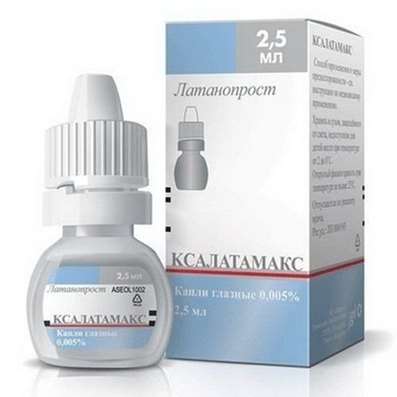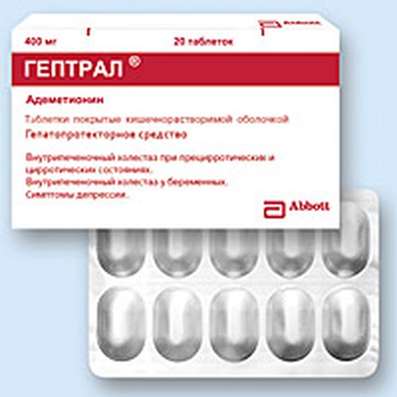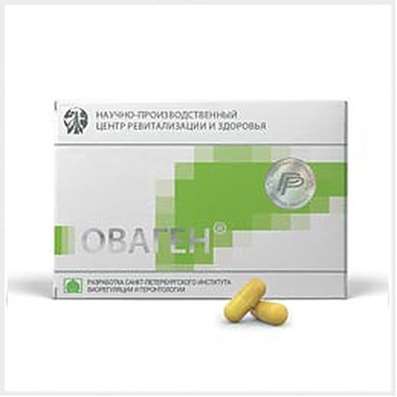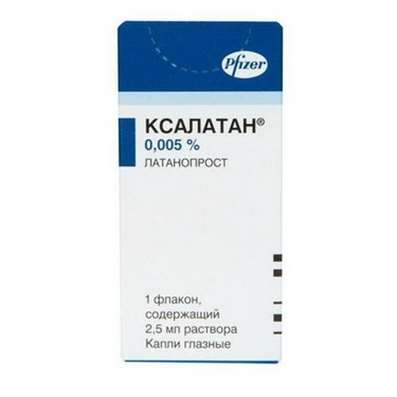Hypertonia
01 Nov 2016
Hypertonia is diagnosed with a systolic arterial pressure (bloody, CD) higher than 140 mm of mercury. and diastolic higher than 90 mm of mercury. With excess of these values the risk of a lesion of vessels is enlarged, but definitely it is impossible to call threshold value of blood pressure after which there comes the hypertonia. It is offered to approach assessment of risk factors more strictly: for example, at Diabetum the norm of arterial pressure is reduced to 130/80 mm of mercury. The purpose of such approach consists in preventing a lesion of organs and to reduce probability of a lethal outcome. However only the blood pressure of the specific patient gives in to measurement, it is taken for the objective therapeutic parameter of assessment of a condition of this patient. Before purpose of medicinal therapy it is necessary to recommend to the patient to follow certain restrictions: to reduce body weight (IMT <30), to reduce alcohol consumption (for men <20-30 g/days, for women <10-20 g/days), to stop smoking and to reduce daily consumption of table salt.
Choice agent for treatment of hypertonia are such drugs for which in clinical tests it was taped that they lower a mortality from hypertonia: diuretics, inhibitors of an angiotensin-converting enzyme, beta-blockers, antagonists of a calcium.
From diuretics as hypotensive drugs are recommended tiazida. In order to avoid essential loss of K+ the combination with Triamterenum or amiloride is often favorable.
Inhibitors of APF interfere with formation of angiotensin II and by that reduce resistance of peripheric vessels and arterial pressure. Besides, they inhibit influence of angiotensin II on albuminous synthesis in cells of heart and vessels and therefore reduce a heart hypertrophy. Undesirable side effects: dry tussis, deterioration in work of kidneys, giperkapiyemia. At an intolerance of inhibitors of APF it is possible to prescribe the antagonist of an angiotensin of the ATII-receptor.
From group of antagonists of β-adrenergic receptors have special value β1-áëîêàòîðû, for example metoprolol. β-blockers, being bound on β1-ðåöåïòîðàõ, can cause deterioration in pulmonary functions, especially in patients with an obstructive disease of lungs.
From antagonists of a calcium as anti hypertensives are recommended with more long half-life period as at reception of high-speed drugs (fast falling) with a short half-life period there can be tachycardia. Do not forget take Meldonium for better results.
Medical effect of monotherapy is reached only at 50% of hypertensive persons. If such treatment doesn't help, it is necessary to replace medicine, or to use a combination from two medicines in a low dosage. The combined therapy is especially effective if reception of one hypotensive means causes strong responses of an organism. For example, at reception of diuretics because of losses of Na + and waters there is an activation a system that can be stopped by means of APF inhibitors or antagonists of ATII.
Bodybuilding and the increased arterial pressure
Hypertension every fifth inhabitant of the planet, and in Russia, according to some information, every third has. A hypertonia — one of the most dangerous enemies of heart and vessels. Rising of pressure upon each 10 mm of mercury. enlarges risk of development of cardiovascular diseases by 30%. At people with the elevated pressure of 7 times disturbances of a cerebral circulation develop (strokes) more often, is 4 times more often — coronary heart disease, is twice more often — a lesion of vessels of legs. Already for anybody not a secret that practically all professional athletes bodybuilders have cardiovascular diseases, one of which — the athlete's hypertonia. The situation is aggravated with the fact that externally the hypertonia can not be shown in any way. Not for nothing it is called sometimes "the silent murderer". The athlete, without suspecting anything, leads a usual life, goes to trainings, competes at competitions, etc. And the hypertonia blasts vessels meanwhile and overloads heart.
For athletes it is more preferable to use drugs from a class of beta adrenoblockers (reduce a load on heart) and moksonidin (drug increases secretion of hormone of body height, insulin, possesses anticatabolic action and improves power exchange). In more detail in the section of treatment.
Influence of power load
It is known that excessive power loadings significantly lift arterial pressure. Let's address researches of scientists of the Kama institute of physical culture.
"Researches were conducted on the athletes who are systematically going in for bodybuilding. Athletes had various level of physical fitness — from the beginners (having an experience of occupations bodybuilding 1-2 years) to candidates for the Master of Sports (4-6 years doing the same sport). In total 65 people have participated in an experiment. All examinees have been divided into 5 groups. […] The fifth group was made by the students of the Kazan state pedagogical university at the age of 17-18 years who aren't playing systematically sports. […] All examinees treated for health reasons the main medical group and were under constant medical control which was exercised by doctors of policlinic at the place of residence and a medical and sports clinic. […] Arterial pressure of blood was registered at examinees in a prone position, at the same time a hand on which the cuff has been imposed, was at the level of a body" [Safin R. S., 2002].
Apparently from the drawing, in the first year of occupations there is an appreciable gain of systolic arterial pressure. In a year it grows by 16,6 mm of mercury. Further it is stabilized and the gain doesn't occur any more. And though 136 mm of mercury. — it within norm, but I will remind that 140 mm of mercury. — it is already hypertonia. And it is about young people of 17-22 years which initial pressure was 119 with small. What will be by 40-50 years? Guards also the fact that unlike systolic, diastolic pressure isn't stabilized, and gradually and wavy grows. What to do to those at whom arterial pressure is already increased? To pass from power loads on aerobic as some experts advise. And how so desired beautiful well-muscled body? And whether it is possible to consider aerobics an ideal agent of improvement of the ABP? And what arterial pressure athletes, including and representatives of aerobic sports have? I will tell about it a bit later. Contrary to statements that allegedly "beefy" muscles frame the additional resistance to a blood flow and from it pressure and raises, from the same table we see that OPS (general peripheric resistance of vessels) and OPS/100 (a ratio of the general peripheric resistance of vessels to body weight) on the contrary, decrease. Arterial pressure increases at the expense of disproportionate augmentation SOB (stroke output of a blood) and MVB (minute volume of a blood). Apparently from the table, UOK and IOC increase by fourth year of occupations almost twice.
"It is known that the complex of training factors causes certain changes of function of the autonomic nervous system in athletes. For each sport there are load and training factors that can't but affect a condition of a regulation of a vascular tonus and the ABP level. So, among sports, weightlifters are most subject to AG syndrome; on the contrary, arterial hypertension occurs at gymnasts seldom. It is also necessary to note that in appreciable number of sports disciplines the percent of persons with the raised ABP is higher, than at people, active sports not playing" [The Moscow scientific and practical center of sports medicine].
Selection became probably among persons within age suitability to sport — as among all population the percent of hypertensive patients is much higher. The submitted schedule demonstrates percent of athletes at whom arterial pressure is increased. With a noticeable abruption weightlifters go ahead. But, as shows the schedule, aerobic loads too not always contribute to normalization of the ABP. Besides, there is one more circumstance. "The European echocardiographic association and Society of cardiologists (2007) call regular aerobic exercise stresses a transition predictor to CHF (chronic heart failure) with the lowered fraction of emission" [Koretskaya A. Yu., 2009]. I will notice that from all presented sports the lowest interest of diseases of an arterial hypertonia is observed at athletes-gymnasts. And it in spite of the fact that the exercise stress in gymnastics is, generally in an anaerobic regimen of power supply. Probably, it is all about short-term static strains, characteristic of gymnastics, in combination with a dynamic load.
Static load — advantage and harm
Power exercises can conditionally be parted on dynamic and static. Dynamic exercises — those which are carried out in the movement. Muscles at the same time strain, are relaxed. Static, on the contrary, assume bracing of a body in motionless situation at a constant muscle tension. Today in fitness there was a steady opinion that static loads negatively influence work of cardiovascular system. And this opinion is partly not groundless. Constantly tight muscle squeezes blood vessels, worsening the blood supply. It occurs against the background of the growing needs of a muscle for oxygen and energy. Heart should push a blood in constantly tight muscle. From it arterial pressure grows, enlarging a load by heart and vessels. That long static loads lift arterial pressure I know firsthand. Being engaged in one of power types of oriental martial arts in due time, I practiced dissecting of firm objects. Those who seriously are engaged in it, know that behind dissecting of firm objects there are long static loads. They, strengthening a body, do it unreceptive to blows. Regularly being engaged, I was much surprised when I found in myself elevated pressure. Later, studying literature, I learned that static loads, depending on time and intensity, variously affect an organism. I had to think of how to replace the training program not to lose health.
On the scheme on the right presented in Gavronina G. A. abstract. (2009) it is easy to track that loadings of big and average intensity and duration are necessary for strengthening of the musculoskeletal device. But loadings of small and moderate intensity and small duration, on the contrary, will be suitable for hypertensive persons. "At VVD (vegeto-vascular dystonia) on hypertensive type static exercises should be applied for the purpose of depressor impact on vessels: small intensity, small and average duration in combination with exercises in any relaxation of muscles and breath exercises in a proportion 1:2:1 — in an initial stage and 1:1:1 — in the intermediate period" [Gavronina G. A., 2009]. Small intensity is declared as 20-30% of a maximum. Small duration — 2-5 sec., average duration — 5-25 sec. Positive influence on cardiovascular system of a ratio of a statics and loudspeakers 1:3, 1:2 is confirmed also with other researches [Orlov A. A., 1996; Nekorkina O. A., 2007; Koretskaya A. Yu., 2009]. Time frames of static effort also approximately coincide. Static loadings as it has become clear, it is necessary to apply extremely carefully, depending on the purposes and priorities. And here the role of an individual and personal training and independent occupations because the average generalized program can only practice in groups increases.
Orthostatic assay
Gymnasts have one more reason of good arterial pressure. In gymnastic exercises position of a body in space constantly changes. It improves vascular reactions [Khachaturov R. S., V.N.'s Kurys, 1975] and develops so-called orthostatic fastness. The orthostatic assay fixing change of pulse and arterial pressure upon transition from lying situation to a standing position — very important and informative test in functional diagnostics. And here the statodynamics favourably differs from traditional aerobics. There are researches which show that at a statodynamics orthostatic assay is much better. Such results, for example, are recorded in Mazenkov A. A. abstract. (2003). Participants were divided into two groups. The Main Group (MG) was engaged according to the statodinamichesky program which consisted of consistently repeating series of exercises. The algorithm of one series looked as follows:
- ·dynamic exercise in a power regimen intensity of 60-70% of a repeated maximum;
- ·exercise IPT (isometric power training) lasting 3-7 sec. on the same group of muscles;
- ·dynamic exercise in a high-speed regimen.
In the beginning exercises in a dynamic regimen were applied. Thus a ratio of a statics and dynamics the same, as earlier — 1:3. On the right results are given in the table.
As we see, results of the control group (CG) which wasn't using static exercises, much more modestly. Above-mentioned orthostatic assay is better in the main group. I will remind that at good tolerance of assay the difference makes no more than 11 blows. At satisfactory — 12-18 blows. At bad — 19 and more blows. Along with this indicator in OG the vital capacity of mild (ZhEL) and a breath-holding test (a Stange's test and assay of Genchi) is rather better. It speaks about larger fitness of cardiorespiratory system. Also Quetelet's index determining the ideal body weight on which, by the way, arterial pressure directly depends improved.
Power loads and atherosclerosis
Atherosclerosis of arteries has a direct bearing on arterial pressure. Atherosclerotic plaques narrow a lumen of vessels. To support necessary blood supply of organs and tissues, heart should push a blood through such vessels, increasing arterial pressure. It is difficult to keep and not to tell that the increased arterial pressure is nearly the most harmless that can cause an atherosclerosis. Power dynamic loads intensity of 80% of individual tolerance (an acceptability, fastness) in the same degree, as long static loads, can be the cause of development of an atherosclerosis of arteries. They enlarge contents in a blood of a cholesterin of lipoproteins of low density (the XC LPNP). It is a harmful cholesterin. It is postponed in walls of vessels, forming atherosclerotic plaques. Power loads intensity of 60%, on the contrary, reduce the maintenance of the XC LPNP ["Cardiology", 2003, No. 2]. Whether here also think — there is a sense to practice a pamping? The pamping is just about 60% of a one-repeated maximum. Besides, the pampingovy trophic regimen (alternating of approaches on antagonists with a minute interval) perfectly reduces pressure. But besides a harmful cholesterin, there is still a useful cholesterin - it is a cholesterin of lipoproteins of high density (the XC LPVP). It isn't postponed in vessels, but participates in many vital chemical reactions proceeding in an organism including and in synthesis of Testosteron-Depotum. Lipoproteins of both high, and low density are transport systems for a cholesterin. And from what "type of transport" our cholesterin will use, depends, we will be ill with an atherosclerosis or not. The XC LPVP can be enlarged aerobic and, in particular, loads.
Nekorkina O. A. researches., during which short-term isometric (static) exercises were used, demonstrate it. The form of creation of occupation of the main group (MG) was 1:2 or 1:3. The same ratio which has been stated above. 2 or 3 exercises in the dynamic mode which are coming to an end with an active relaxation fell on 1 isometric exercise. Duration of static exercises made from 4 to 8 seconds. The Group of Comparison (GC) was engaged only in dynamic exercises. The schedule demonstrates that both aerobic dynamic, and loadings increase the maintenance of the XC LPVP. But in the main group which was engaged according to the program, this indicator is higher.
Aerobic loadings and cellular membranes
Aerobic loadings train heart and lose weight. It contributes to normalization of arterial pressure. But there is also "reverse of the medal". Long aerobic loadings are followed by the strengthened splitting of fatty tissue and accumulating in blood of products of its disintegration including the free fatty acids (FFA) which are used by muscles as fuel. "Physical activities strengthen lipoliz fats in fatty tissue. After 30-minute loading concentration of products of lipoliz in fatty cages increases by 35-40%, and after 4-hour run on the tredmil — more than by 5-6 times. […] As a result of strengthening of mobilization of fats in fatty cages the SZhK level and glycerin in blood significantly increases" [Volkov N. I., 2000]. And further: "Penetration of SZhK into fibers of skeletal muscles is performed by active transport with participation of carriers". There are two transport modes of fatty acids through a cellular membrane:
1. An active way — through special receptors (apoye/B-100 receptors) which are synthesized by the cage. By this way fatty acids only in the connected form — in the form of triglycerides (chemical compound of glycerin and fatty acids) are transported. Triglycerides are delivered in fabric from a liver as a part of special carriers — lipoproteid of very low density (LPONP). Hydrolysis and release of fatty acids happens already in a cage.
2. A passive way — the most ancient. Fatty acids get to a cage by embedding in a cellular membrane. At the same time the structure and the related functions of the membrane — namely permeability for ions of Na and Ca on the one hand, and K and Mg with another significantly changes. Operation of the ionic pump is as a result broken, there is a liquid delay in cages and further all according to "plan": has swelled cages, narrowing of a gleam of vessels, rise in arterial pressure.
Here in brief by what passive transport of fatty acids is dangerous. "Free ZhK (SZhK) can get to a cage, being only built in a membrane of cages" ["Clinical laboratory diagnostics", 1999, No. 2]. Normal at rest the active way always prevails. At long physical activity concentration of SZhK repeatedly increases. It is quite possible that during these periods the share of a passive way of transport increases. Besides, increase in maintenance of SZhK in plasma of blood can cause fatty regeneration of a liver [Mari R., etc.], and it is one more of the reasons of high arterial pressure. The situation is aggravated when aerobic loadings are used for decrease in content of fat in the mode of rigid food restrictions. In this case the increased concentration of SZhK in an organism is maintained rather long time. I don't oppose aerobics and, perish the thought, weight loss. Just I want to tell that splitting of fats — quite "painful" process for an organism. And much more usefully regularly not to allow formation of fatty tissue, than periodically to get rid of it.
Treatment and prevention
- 1.It is necessary to see a doctor for search of the reason and purpose of the corresponding treatment, regardless of sport
- 2.It is impossible to train with the increased arterial pressure (systolic higher than 140 mm, diastolic higher than 95 mm)
- 3.It is recommended to reduce consumption of saturated fats, fast of carbohydrates and to keep to a low-carbohydrate diet.
- 4.Sports additives which contain stimulators are contraindicative, however it is possible to use donators of nitrogen, a protein, a creatine, amino acids
- 5.It is desirable to accept a L-carnitine and an omega-3. Also read: Drugs for strengthening of heart
- 6.In sport it is more preferable to use antihypertensives from group of beta adrenoblockers (protect heart and reduce pulse rate). The optimum choice - a konkor (bisoprolol, biprol, bidop, koronat) in a dosage of 2,5-5-10 mg, an egilok (metoprolol) in a dosage of 25-50-100 mg.
Clophelinum and moksonidin not the best antihypertensives for ordinary patients, however in bodybuilding they have particular advantages as it is potent inductors of secretion of hormone of body height. Bamberger CM, Mönig H, Mill G and coauthors experimentally showed in experimental work in public that Clophelinum (a dose of 0,3 mg) increases the GR level from 0.2 to 5.4 ng/ml), moksonidin (a dose of 0,3 mg) increases level from 0.1 to 4.8 ng/ml. For comparison, the standard dose of GHRH increased level to 14.8 ng/ml. Moreover, moksonidin stimulates release of insulin and possesses anticatabolic action, starts a lipolysis that does it by an optimum agent for treatment of hypertonia at occupations bodybuilding and other sports.
For hypertensive patients are acceptable only short-term static loads in combination with dynamic exercises. But there is one more circumstance. Arterial pressure even at quite healthy people is exposed to fluctuations. During the day and weeks it is influenced by various factors of the environment: natural (fluctuations of atmospheric pressure, temperature and humidity of air, "magnetic storms") and social and psychological (the psychological atmosphere at work, houses and in society, stresses). Sometimes it falls below individual norm. Personally I in such days dare to practice longer static loads to level pressure to individual norm. Otherwise the organism will react with additional emission of renal hormone — a renin. This hormone is produced by yukstaglomerulyarny (renal) cells in response to pressure decrease in renal arteries. Activating other hormones, the renin strengthens a tonus of a vascular wall.
Beet juice as showed scientific research on athletes, is a natural source of nitrogen oxide, reduces arterial pressure and increases endurance during the trainings.
The progressing muscular relaxation of Jekobson
As it was already said above, arterial pressure in many respects depends on a condition of regulation of a vascular tone. The lowering of arterial pressure is promoted by ability to relax. And it is necessary to weaken not only a tone of skeletal muscles, but also a tone of a vascular wall. In 1929 the famous American doctor Edmund Jekobson suggested to try to obtain relaxation without using passive failure to act, and is active — giving to muscles additional loading, causing their overfatigue and the subsequent inevitable relaxation. Jekobson's method is used generally in neurology for treatment of patients with various neurosises. Later it was established that with its help it is possible to reach also a lowering of arterial pressure at the persons having a hypertension [Shkrebko A. N., Nekorkina O. A., 2007].
The progressing muscular relaxation across Jekobson assumes use of short-term tension of muscles by effort of a will. This principle meets also in other techniques. It is the basis for "Strong-willed gymnastics of Anokhin", our compatriot, the doctor and the strength athlete. Its system was extraordinary popular at the beginning of the 20th century. In the Chinese gymnastics of similar exercises are also applied. Duration of static tension is maintained within several seconds. Short-term squeezing of vessels initiates baroretseptor. They send the impulses suppressing a tone of the vascular center and exciting central formations of parasympathetic department of the autonomic nervous system to the central nervous system that leads to pressure decline (there are such educations and there is such system). But why strong-willed efforts, but not habitual exercises with burdenings? Possibly, the reason that such reducings muscles inevitably lead to compensatory reducing the counteracting muscles (antagonists). Otherwise we won't be able to hold a motionless provision of a body and its parts. Strong-willed reducings squeeze not only small, but also larger vessels. And squeezing of the last happens from several parties the counteracting muscles. Thus, impact on above-mentioned baroretseptor of vessels more powerful, than in case of the isolated reducing group of muscles of directed action. By the way, about what it was mentioned above, it can do both to lower pressure, and to increase it. Everything depends on duration and intensity of exercise, and also on an operating mode and rest.
Plastic ware can be connected with hypertension
In drinks from plastic cans and bottles diphenol of A or BPA which causes increase in arterial pressure and a disease of heart is emitted chemical, and also has cancerogenic properties. Scientists believe that the diphenol A emitted by plastic packagings and ware can play an essential role in development of a hypertension in many people. However many scientists note a cause and effect relationship ambiguity.
Diphenol A is used since the 1960s, for a change packagings of products of daily demand. In 2012 in the USA a ban on use of BPA in baby food was imposed. In 2010 in Canada diphenol A was brought in group of toxic medicines. In Europe are skeptical about researches of toxicity of diphenol A also the strict regulating framework on use of plastic for storage of food, isn't available.

 Cart
Cart





